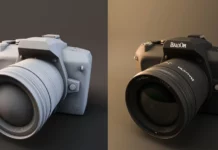Slip rings are an integral element in celestial navigation, bridging the gap between stationary and rotating parts and ensuring seamless transmission of power and data. Being a vital component, it’s essential to source high-quality slip rings from reputable manufacturers. In this comprehensive guide, we present the top ten providers and a series of commonly asked questions to efficiently navigate your purchase journey.
What is a Slip Ring?
A slip ring is an electromechanical device that enables the transmission of power and electrical signals from a stationary structure to a rotating one. It is designed to improve mechanical performance, simplify system operation, and eliminate damage-prone wires dangling from movable joints. Slip rings play a critical role in various industries, particularly in celestial navigation, where the continuous and reliable transfer of data is essential for successful operations.
Slip Ring Product Specification Introduction
Understanding the specifications of slip rings is crucial for choosing the right one to meet celestial navigation requirements. Here are some key points to consider when evaluating slip ring specifications:
- Voltage rating: Refers to the maximum voltage level the slip ring can handle. Different applications require different voltage ratings depending on system requirements.
- Current rating: Indicates the maximum current that can pass through the slip ring without causing damage or affecting its performance. Select a slip ring with a current rating that meets your equipment’s needs.
- Number of circuits: Represents the total number of different types of signals (power, data, etc.) the slip ring can transmit. Ensure the chosen slip ring has enough circuits for your application.
- Signal type: Slip rings can transmit various signal types, including analog, digital, or a combination of both. Choose a slip ring capable of handling your required signal types.
- Mounting type: Describes how the slip ring is attached to the equipment. Common mounting types include through-hole, flange, and capsule. Select a slip ring compatible with your mounting requirements.
- Rotational speed: Indicates the maximum speed at which the slip ring can rotate without compromising performance or causing damage. Ensure the selected slip ring’s rotational speed matches your equipment’s needs.
6 Slip Ring Products Most Suitable for Celestial Navigation
Mercury Slip Rings
Known for their durability, long service life, and compact size, mercury slip rings are perfect for applications where space is limited. As the contacts are immersed in mercury (liquid metal), they can maintain stable electrical connections even during rapid and constant rotation.
Miniature Slip Rings
These slip rings are designed for high-speed data transfer and have a small size that makes them suitable for use in sophisticated celestial navigation equipment with space constraints. They offer low friction and are often built with a gold-on-gold contact surface to facilitate reliable signal transmission.
Ethernet Slip Rings
Offering high-speed and stable data signal transmission over ethernet lines, these slip rings are ideal for modern celestial navigation equipment that needs seamless connectivity and operational efficiency. They provide minimal electrical noise and are available in multiple circuits, facilitating the simultaneous transmission of power and data.
Fibre Optic Rotary Joints (FORJ)
Capable of providing high-speed and long-distance data communication, these slip rings are apt for applications that demand high bandwidth or involve large volumes of data collection. They offer minimal signal loss, high data rates, and immunity to electromagnetic interference.
High Frequency Rotary Joints
Specially designed for situations where equipment operates in extreme temperatures, these slip rings are built to function under difficult conditions while maintaining reliable performance. They offer a range of frequency options and can be customized for specific celestial navigation applications.
Capsule Slip Rings
Compact and versatile, capsule slip rings are designed for systems that require multiple circuits in a small space. Their integrated design ensures smooth and reliable transmission of power and data signals, making them ideal for sophisticated celestial navigation equipment.
Why Slip Rings are Important for Astronomical Navigation
Slip rings play a vital part in celestial navigation since their functionality greatly impacts the accuracy and consistency of the equipment used. They ensure:
- Continuous and efficient power supply to devices, providing uninterrupted performance.
- Reliable data transmission between stationary and rotating parts, maintaining accurate positioning and rotation measurements for navigational purposes.
- Durability to withstand extreme conditions, such as rapid rotation, wide temperature fluctuations, and the rigors of long-duration space missions.
Misunderstandings of Purchasing Slip Rings Required for Celestial Navigation
When buying slip rings for celestial navigation applications, people commonly misunderstand the following aspects:
- Considering current rating as the lone factor: The current rating is an essential aspect, but it should not overshadow other factors such as compatibility, performance, and mechanical requirements.
- Overlooking life expectancy: Ensure your chosen slip ring has a long service life to avoid constant replacements and resulting downtime to maintain efficient operations.
- Ignoring the importance of size and installation space: Keep in mind the size and available installation space when choosing a suitable slip ring for your equipment. Bulky slip rings may interfere with the system’s performance and hinder its functionality.
- Mistaking higher price for better quality: Costlier slip rings do not always guarantee better performance. Evaluate products based on specifications, compatibility, quality of materials, and track record.
Guide to Selecting Slip Rings Required for Celestial Navigation
To select the right slip ring for celestial navigation, consider the following factors:
Electrical Requirements
Evaluate the voltage rating, current rating, number of circuits, and signal types needed for your celestial navigation system.
Mechanical Requirements
Assess factors like mounting type, rotation speed, size, and housing to ensure a seamless integration with your equipment.
Environmental Conditions
Consider the operating temperature range, weather resistance, and other environmental factors to ensure long-lasting performance.
System Constraints
Review your system’s design, space limitations, and maintenance requirements to guarantee compatibility with the selected slip ring.
Future Specifications
Anticipate changes, upgrades, or expansions to your system and choose a slip ring that can adapt to those needs.
Where Can I Buy the Slip Rings Needed for Celestial Navigation?
To help you find the right slip rings for your celestial navigation needs, we have compiled a list of 10 reputable manufacturers, complete with their key product features and contact information:
Moflon
- Specializes in custom-designed slip rings for various applications, including celestial navigation
- Offers a range of solutions like mercury slip rings, fiber optic slip rings, and high-speed rotary joints
- Website: https://www.moflon.com/
- Email: [email protected]
- Phone: +86-755-3319-3649
JINPAT Electronics
- Provides a variety of slip rings, including miniature, Ethernet, capsule, and high-frequency rotary joints
- Offers customized slip ring services tailored to your celestial navigation needs
- Website: http://www.ejinpat.com/
- Email: [email protected]
- Phone: +86-755-8204-2424
Schleifring
- Offers a wide range of slip rings, such as standard, high-power, high-frequency, and fiber optic rotary joints
- Provides engineered slip rings for aerospace and military applications
- Website: https://www.schleifring.de/en/
- Email: [email protected]
- Phone: +49 (0)8152 9960
Cobham
- Manufactures slip rings, fiber optic rotary joints, and antenna systems for aerospace and military applications
- Specializes in high-reliability and high-performance slip rings for celestial navigation equipment
- Website: https://www.cobham.com/
- Contact: https://www.cobham.com/contact-us/
DSTI
- Offers custom slip rings, high-pressure rotary unions, high-frequency rotary joints, and electrical slip rings
- Provides end-to-end solutions for various celestial navigation equipment types
- Website: https://www.dsti.com/
- Email: [email protected]
- Phone: +1 (763) 404-8000
United Equipment Accessories
- Produces robust, high-quality slip rings for aerospace, defense, and industrial applications
- Offers custom-built solutions for your specific celestial navigation challenges
- Website: https://www.uea-inc.com/
- Email: [email protected]
- Phone: +1 (319) 352-3946
AOOD Technology Limited
- Manufactures and supplies a wide array of slip rings, such as standard, mini, and pancake slip rings
- Specializes in custom slip rings for military, aerospace, and industrial applications
- Website: http://www.aoodtech.com/
- Email: [email protected]
- Phone: +86-21-6145-8920
Electro-Miniatures
- Offers a selection of high-grade slip rings, including pancake, multiline, and custom slip rings
- Expert in designing and manufacturing slip rings for aerospace and military requirements
- Website: https://www.electro-miniatures.com/
- Contact: https://www.electro-miniatures.com/contact-us/
Linkchi
- Provides reliable slip rings, high-frequency rotary joints, and Ethernet slip rings
- Specializes in custom solutions for aerospace, military, and solar tracking applications
- Website: https://www.linkchigroup.com/
- Email: [email protected]
- Phone: +86-595-2809-6575
Hangzhou Grand Technology
- Specializes in advanced slip ring solutions, including high-speed data transmission slip rings and fiber optic rotary joints
- Offers a comprehensive range of slip rings for celestial navigation applications
- Website: https://www.grandslipring.com/
- Email: [email protected]
- Phone: +86-571-8814-7716
Each manufacturer listed above offers customized or off-the-shelf slip ring options tailored to your celestial navigation system requirements. Before purchasing, it’s essential to consider your specific needs, compare various product offerings, and consult with knowledgeable sales representatives to find the best solution.
When Do You Need to Replace Slip Rings in Celestial Navigation?
To maintain optimal performance, replace slip rings when they show:
- A noticeable decline in performance
- Increase in electrical noise or resistive losses
- Interrupted or sporadic transfer of signals
- Decreased rotation speed
- Visual wear and tear (corrosion, worn-out brushes, etc.)
Frequently Asked Questions
Q: How often should slip rings be inspected for wear and tear?
A: It depends on the usage, application, and environmental conditions, but periodic inspections every 6 to 12 months are generally recommended.
Q: Can I use a slip ring in a vacuum environment?
A: Yes, some slip rings are specifically designed for use in vacuum environments, such as space applications. Make sure to choose a slip ring that can operate in a vacuum without impacting performance.
Q: What is the typical lifespan of a slip ring in celestial navigation equipment?
A: The lifespan of a slip ring depends on several factors including operating conditions, maintenance practices and quality of the slip ring itself. However, a well-maintained, high-quality slip ring could last for several years.
Q: How does a slip ring work in celestial navigation systems?
A: A slip ring allows for the transmission of power and data between stationary and rotating parts in celestial navigation systems. This supports continuous rotation without adversely affecting the connected circuits’ performance.
Q: Are all slip rings designed the same?
A: No, slip rings are available in various designs such as pancake, capsule, mercury and ethernet slip rings, depending upon their applications and requirements.
Q: How can electrical noise in slip rings affect celestial navigation?
A: Electrical noise in slip rings can cause inaccuracies in data transmission, leading to errors in celestial navigation and overall system performance.
Q: Can I use any kind of slip ring for celestial navigation?
A: Not necessarily. The type of slip ring used should meet the specific requirements of your celestial navigation system, such as voltage and current ratings, the number of circuits, and environmental conditions.
Q: Are there slip rings specifically designed for high-speed celestial navigation applications?
A: Yes, there are high-speed slip rings available that are specifically designed for applications requiring high rotational speeds and efficient data transmission, such as in celestial navigation.
Q: How does temperature affect the operation of slip rings?
A: Extreme temperatures can cause expansion or contraction of material, affecting the slip ring’s performance. Therefore, it’s crucial to choose slip rings designed to operate within your system’s expected temperature range.
Q: What are the common signs of a failing slip ring?
A: Common signs include decreased rotation speed, increased resistive losses, sporadic signal transmission, and visible wear and tear such as corrosion or worn-out brushes.
To conclude, selecting the appropriate slip ring for your celestial navigation system can significantly determine its efficiency and overall performance. By understanding the technical aspects and engaging with experienced suppliers like the ones listed, you’re well-equipped to make an informed purchase. Remember, the right slip ring tailored to your specific needs will ensure a celestial navigation system that is not only robust and reliable but one that stands the test of time.





